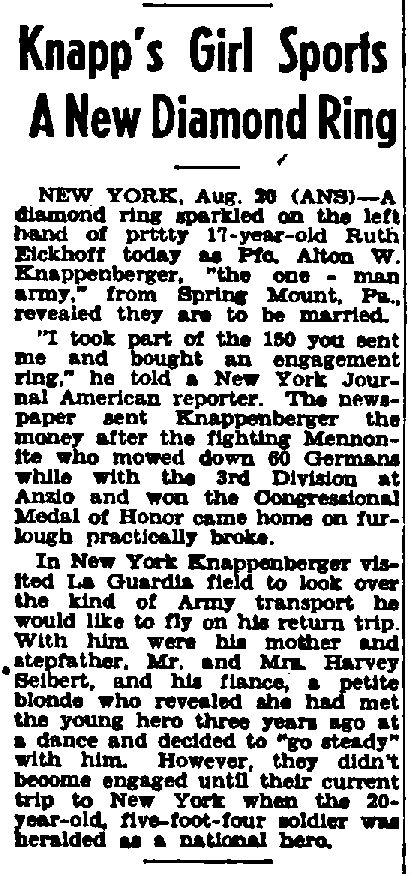ALTON WARREN KNAPPENBERGER
CONGRESSIONAL MEDAL OF HONOR

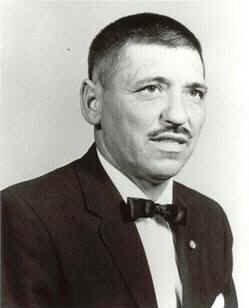
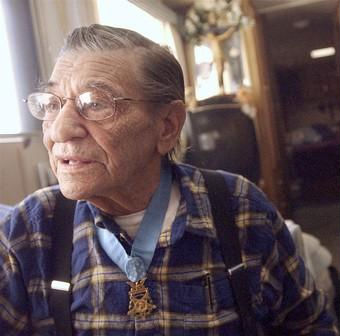
Alton W. Knappenberger: Obituary
Alton W. Knappenberger, 84, of Boyertown, passed away Monday, June 9 at Pottstown Memorial Hospital. He was the beloved husband of Hazel (Hamlin) Knappenberger to whom he was married for over 32 years. Born December 31, 1923 in Coopersburg, he was one of six children born to the late Frank and Lottie (Greenwalt) Knappenberger.
Mr. Knappenberger served in the U.S. Army during WWII. He was a Private First Class, in the 3d Infantry Division. Mr. Knappenberger received the Congressional Medal of Honor For conspicuous gallantry and intrepidity at the risk of his life above and beyond the call of duty in action involving actual conflict with the enemy, on February 1, 1944 near Cisterna di Littoria, Italy. Pfc. Knappenberger’s intrepid action disrupted the enemy attack for over 2 hours. Mr. Knappenberger was employed at K and K Paving as a truck driver. He was a member of the American Legion of both Sellersville and Spring Mount. Mr. Knappenberger enjoyed the outdoors and taught his children and grandchildren the joys of hunting and fishing. He was very active with his children’s and grandchildren’s lives umpiring their little league games in the Pottstown little league, and playing the role of Santa on a few occasions at their schools. Mr. Knappenberger was a very loving and devoted husband, father, and grandfather.
In addition to his wife, he is survived by his children: Alton Knappenberger and his wife Nancy of Salt Lake City, Utah, Dorothy Reinert and her husband Robert of Fla., Paul Knappenberger and his wife Shirley of Pottstown, Hazel Trump of Pottstown, Mitzie Chrisman and her husband Ronald of Pottstown, and Robert Moser of Graterford; and many grandchildren, great grandchildren, and great-great grandchildren.
He was predeceased by his siblings, Elmer Knappenberger, Frances Kramer, Edie Trump, Laura Moyer, Frank Knappenberger; his children, Vickey Butler, and Sharon and Karen Knappenberger; and grandchildren, Jean Marie, and Tracy.
Relatives and friends are invited to attend his funeral service on Tuesday, June 17 at 7 pm. from the R.L. Williams, Jr. Funeral Home, Inc. Interment will be at Arlington National Cemetery. Contributions may be made in his memory to the Veterans Home, 1 Veterans Drive, Spring City, PA 19475-1230.
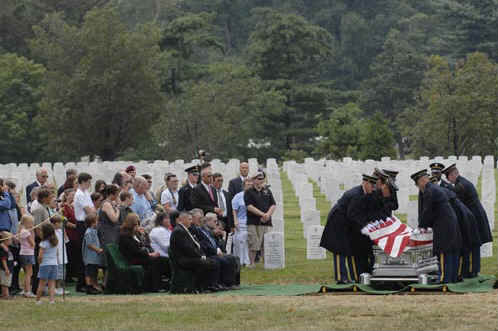
In Arlington National Cemetery, July 31, 2008, a US Army honor guard folds the American flag
that covered the coffin of the late Medal of Honor recipient Alton Knappenberger.
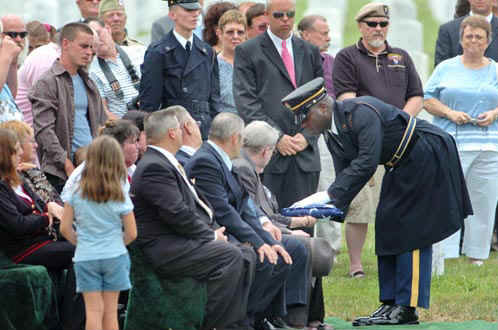
A US Army honor guard member presents the flag from over the coffin of the late
Medal of Honor recipient Alton Knappenberger to Knappenberger’s widow Hazel.
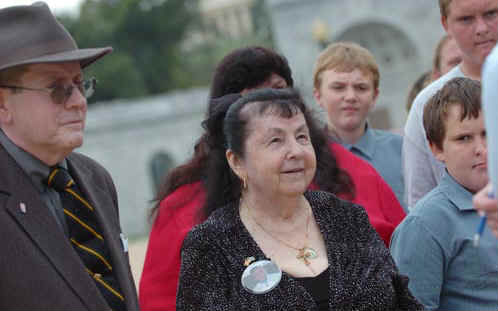
Don Moser, left, stepson of Alton Knappenberger
and Hazel Knappenberger, widow of the late Medal of Honor recipient.
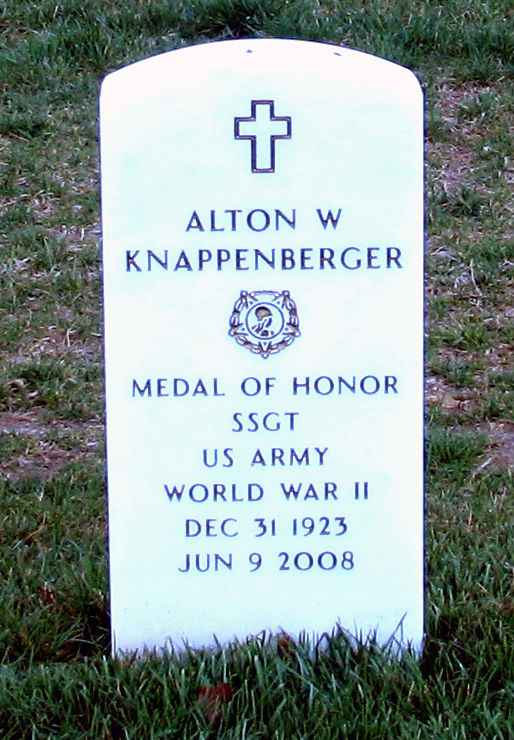
“A Hero’s Tribute” by Josh Drobnyk and David Venditta of The Morning Call, 1 August 2008
ARLINGTON, VA – Alton Warren Knappenberger was laid to rest at Arlington National Cemetery on Thursday, six decades after he single-handedly held off two German infantry companies in Italy, a feat that earned him the military’s highest award for valor. With a Medal of Honor flag flapping in the wind and a firing party and bugler standing in the distance, four dozen family members and friends bade farewell to a man they said had long avoided the recognition that he deserved. Knappenberger, who lived near Boyertown in Earl Township, could have just as easily gone quietly to his final resting place. This was the type of sendoff Knappenberger, 84 when he died of natural causes last month, would have shied away from. ”He wouldn’t have done it for himself,” Hiedie Ott of Boyertown said of her step-grandfather’s Arlington burial. ”He didn’t like the fuss and stuff. .. We just thought that he deserved it. He deserved his hero’s tribute.”
Knappenberger’s moment came on a winter day in 1944 during his first and only combat experience during World War II. Just days after the Allied landing at Anzio, Italy, the Army private first-class disrupted a German attack for two hours as most of the 200 soldiers in his company perished. Perched on a knoll and armed with a Browning Automatic Rifle that he grabbed from a soldier that had been killed in the attack, Knappenberger crawled amid the snow-covered fields to collect ammunition from American casualties, He was credited with killing 60 enemy soldiers over two hours. As word spread of his heroics, and his commanders investigated the reports, his division’s commanding general called Knappie, as he was known, a ”one-man Army.” ”That’s what you are,” he told the private. ”A blasted one-man Army.”
Four months later in Rome, after victorious Allied forces had entered the city, Knappenberger received the Medal of Honor, ”for conspicuous gallantry and intrepidity at the risk of his life above and beyond the call of duty.” He was one of 464 Medal of Honor recipients from World War II. Twenty-seven are still alive.
His widow, Hazel Knappenberger, said she struggled with the idea of burying her husband of 32 years so far from their home in Earl Township, Berks County, near Boyertown. But she said she was assured by the cemetery that she could join him there one day. ”I wanted to be sure that we could be together because that is what we promised each other,” Knappenberger said, standing amidst friends and family outside the cemetery gates, a button photo of her late husband pinned to her blouse. Plus, stepson Don Moser added as he stood beside his mother, ”he does belong to the country as well.”
After receiving the medal, Knappenberger returned to the Perkiomen Valley in August 1944 to a hero’s welcome, but he avoided showing up at picnics and parades to celebrate his return. He shunned publicity throughout his life, believing what he did on the knoll near Cisterna di Latina didn’t deserve special attention. ”I just did what I had to do,” he said in an interview with The Morning Call in 2004. ”You go in there and just try to get them guys before they get you.”
He spent his career working in foundries and manufacturing plants, driving a truck hauling stone for a quarry, running backhoes and front-end loaders and laying blacktop. He’s survived by his wife, three children from his second marriage and three stepchildren. He spent the final years of his life happily watching the ducks and geese from his trailer, making occasional trips to fish at Mermaid Lake and the Schuylkill River. ”His biggest fish to catch was the carp,” recalled his step grandson, Billy Chrisman, 26. ”He liked the fight.” He had five heart attacks during the past 30 year. ”The doctor always said, ‘Boy, he just won’t give in,”’ Hazel Knappenberger said. ”This time it didn’t work.”
“Medal of Honor: Portraits of Valor Beyond the Call of Duty” by Peter Collier
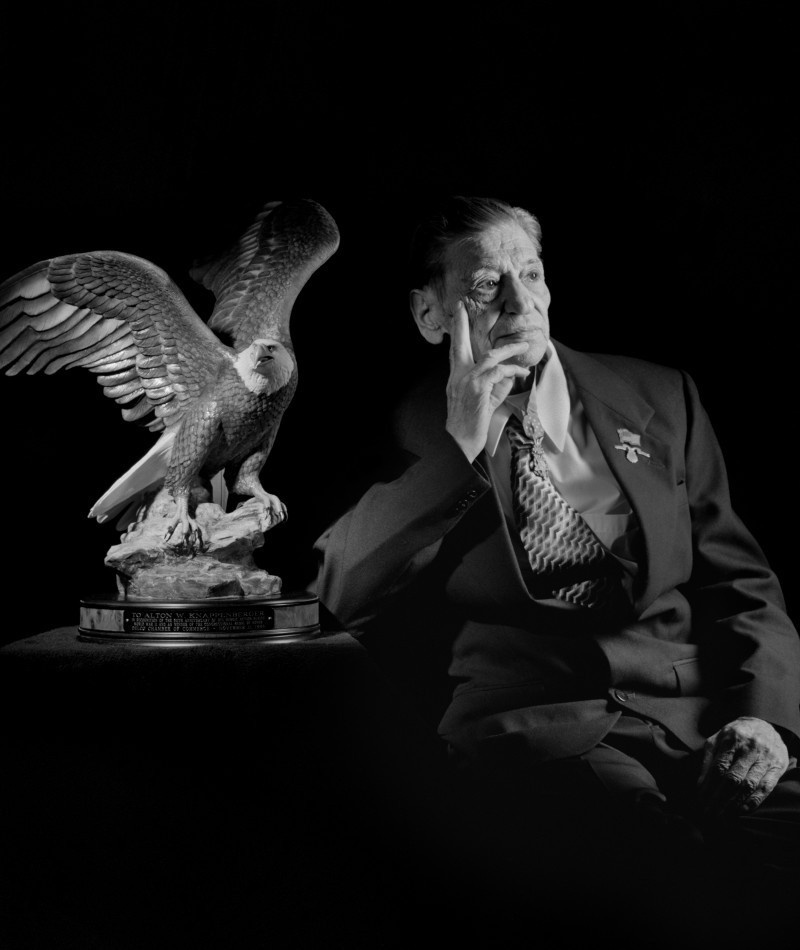
Alton W. Knappenberger was profiled by Brian Williams for MSNBC’s Daily Nightly in August 2007. Every weekday for 110 straight days, the program featured a different living recipient of the Medal of Honor. Brian Williams is a board member of the Congressional Medal of Honor Foundation. The following words and photos are courtesy of Artisan Books, publishers of Medal of Honor: Portraits of Valor Beyond the Call of Duty by Peter Collier with photographs by Nick Del Calzo.
Alton Knappenberger was working on a Pennsylvania pig farm when he was drafted in 1943 at the age of nineteen. He landed at Anzio, on the Italian coast, on January 22, 1944, as part of the Army’s 3rd Infantry Division, and although he did not know it at the time, he was about to become engaged in one of the toughest combat actions of World War II. “Knappie,” as his friends called him, was surprised by how little resistance the Germans initially offered. But as his unit slowly pushed inland over the next few days, he could sense that the enemy was regrouping. It rained constantly. He never forgot the mud; it was so thick and viscous that he worried it might suck off his boots.
On February 1, as Private First Class Knappenberger’s battalion neared the small town of Cisterna di Littoria, the Germans launched a strong counterattack with tanks and artillery that nearly overwhelmed the U.S. force. It was the Germans’ intent to push the Americans into the sea. With American soldiers taking heavy casualties all around him, Knappenberger crawled to a rise so that he could see the enemy. A German machine gun about eighty yards away opened fire, its slugs hitting right in front of Knappenberger and kicking mud into his face. He scrambled to a Browning Automatic Rifle lying beside one of his dead comrades, stood up, and aimed a burst at the machine gun, killing the three Germans operating it. Two Germans crawled to a point within twenty yards of Knappenberger’s knoll and threw potato masher grenades at him. Knappenberger wheeled and killed them both with one burst from his automatic rifle.
He was moving forward when a second German machine gun opened fire from a range of a hundred yards. Knappenberger silenced it with the BAR. Shortly afterward, a German 20 mm antiaircraft gun directed fire at his unit. He took out the German position with his BAR. For the next two hours, Knappenberger single-handedly held off the enemy infantry, which was threatening the efforts of the U.S. force to organize a defense. When he ran low on ammunition, he crawled through heavy fire to the body of another fallen American and grabbed clips from his pack. He resumed firing and repelled a German platoon armed with automatic weapons. Despite heavy fire, shells bursting within fifteen yards of him, he held his precarious position while continuing to fire at the enemy. Finally, his ammunition supply completely exhausted, he rejoined his company, having disrupted the enemy attack for more than two hours. Only six men out of his company of two hundred had not been killed or wounded.
Over the next few weeks, the breakout from Anzio stalled and developed into a stalemate between Allied and German forces as each regrouped. Knappenberger was in a foxhole not far from where the February action had occurred when he was informed that he was to receive the Medal of Honor. It was presented to him on June 8, 1944, by General Mark Clark, commander of the 5th Army, with American troops looking on and the regimental band playing. Soon thereafter, Knappenberger was sent home and traveled around the country telling his story as part of a war bond drive. After the war, he returned home to Pennsylvania and worked as a truck driver and supervisor of an asphalting crew.
Alton W. Knappenberger: Medal of Honor Citation
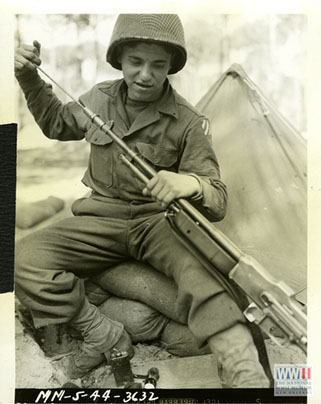
US Army Signal Corps photograph from the
collection of The National World War II Museum
16 April 1944, Beachhead Italy
“You’re a one man army.” said a beachhead general to Pvt. Alton W. Knappenberger, 20, of Spring Mount, Pennsylvania, shown here cleaning his fondest possession, an automatic rifle. With it, he killed approximately 40 Germans. Along with two buddies (killed in this action) ‘Knapp’ (now single-handed) fired 600 rounds of ammo – returned for more- then killed more Germans, including an officer and 7 men who ordered him to surrender. He thought he had killed a ‘nice bunch’ when questioned regarding his lone 1 ½ hr. ‘blitz’.
Rank and Organization: Private First Class, US Army, 3rd Infantry Division
Place and Date: Near Cisterna di Littoria, Italy on 1 February 1944
For conspicuous gallantry and intrepidity at the risk of his life above and beyond the call of duty in action involving actual conflict with the enemy, on 1 February 1944 near Cisterna di Littoria, Italy. When a heavy German counterattack was launched against his battalion, PFC Knappenberger crawled to an exposed knoll and went into position with his automatic rifle. An enemy machine gun 85 yards away opened fire, and bullets struck within 6 inches of him. Rising to a kneeling position, PFC Knappenberger opened fire on the hostile crew, knocked out the gun, killed two members of the crew, and wounded the third. While he fired at this hostile position, two Germans crawled to a point within 20 yards of the knoll and threw potato-masher grenades at him, but PFC Knappenberger killed them both with one burst from his automatic rifle. Later, a second machine gun opened fire upon his exposed position from a distance of 100 yards, and this weapon also was silenced by his well aimed shots. Shortly thereafter, an enemy 20mm antiaircraft gun directed fire at him, and again PFC Knappenberger returned fire to wound one member of the hostile crew. Under tank and artillery shellfire, with shells bursting within 15 yards of him, he held his precarious position and fired at all enemy infantrymen armed with machine pistols and machine guns which he could locate. When his ammunition supply became exhausted, he crawled 15 yards forward through steady machine gun fire, removed rifle clips from the belt of a casualty, returned to his position and resumed firing to repel an assaulting German platoon armed with automatic weapons. Finally, his ammunition supply being completely exhausted, he rejoined his company. PFC Knappenberger’s intrepid action disrupted the enemy attack for over two hours.
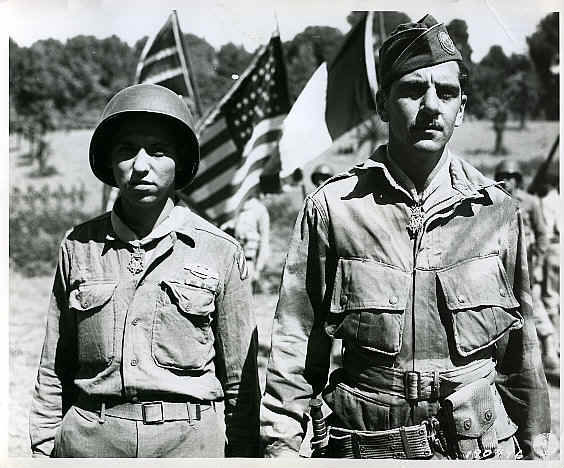
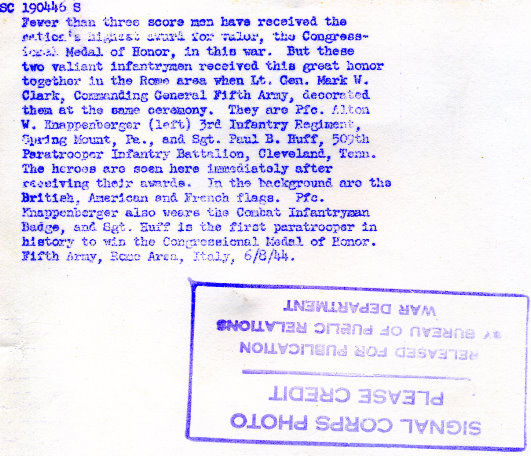
Riverside National Cemetery Medal of Honor Memorial
Special thanks to Kirk R. Knappenberger of California who took the following photographs and provided them to us for use on this website. Riverside National Cemetery is home to The Medal of Honor Memorial, one of four sites in the United States recognized by the US Congress as a National Medal of Honor Memorial Site.
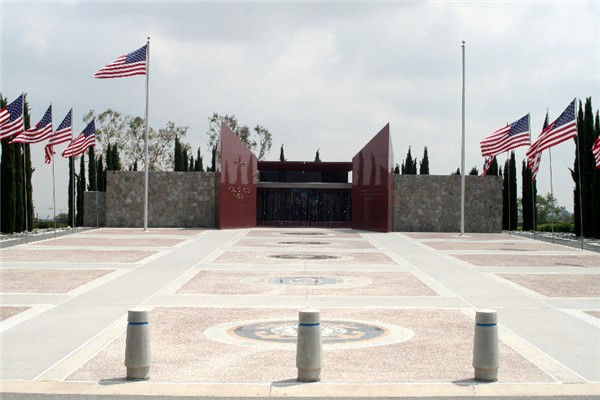
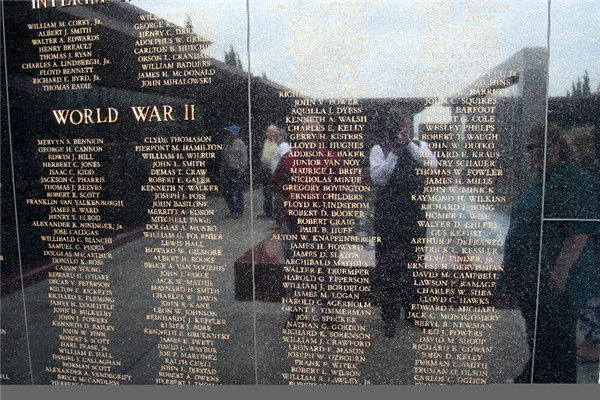
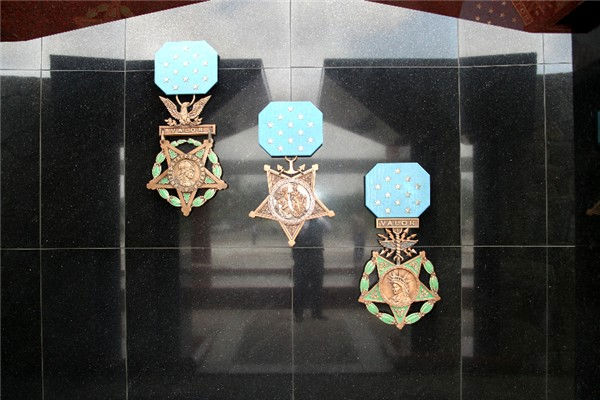
The open air memorial consists of a plaza surrounded by the flags of all fifty states, the District of Columbia and Puerto Rico, representing the homes of the Medal of Honor recipients. Italian Cypress trees, planted in “squads” of nine, encircle the plaza The focal point of the memorial is a water sculpture, a wall of water created by a series of jets.
The Medal of Honor Memorial is the first publicly accessible site that lists the names of all Medal of Honor recipients. The Medal of Honor, sometimes referred to as the Congressional Medal of Honor because it is awarded by the President on behalf of the Congress, is the highest military decoration awarded by the United States. It is bestowed “for conspicuous gallantry and intrepidity at the risk of life, above and beyond the call of duty, in actual combat against an armed enemy force.”
Three different versions of the Medal of Honor are awarded: Army, Navy, and Air Force.
Knappenberger Field, Fort Benning, Georgia
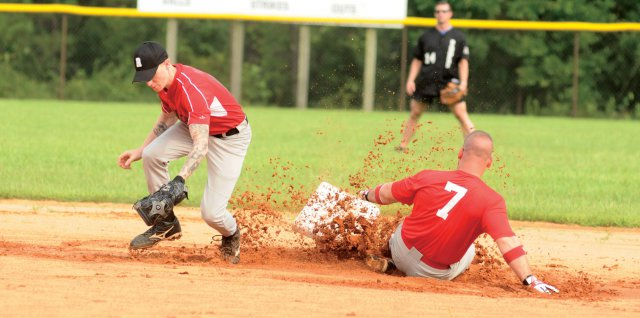
Military bases routinely name their streets,
buildings and airfields after military heroes,
especially those that are recipients of the Medal of Honor.
The Stars And Stripes, 21 August 1944
